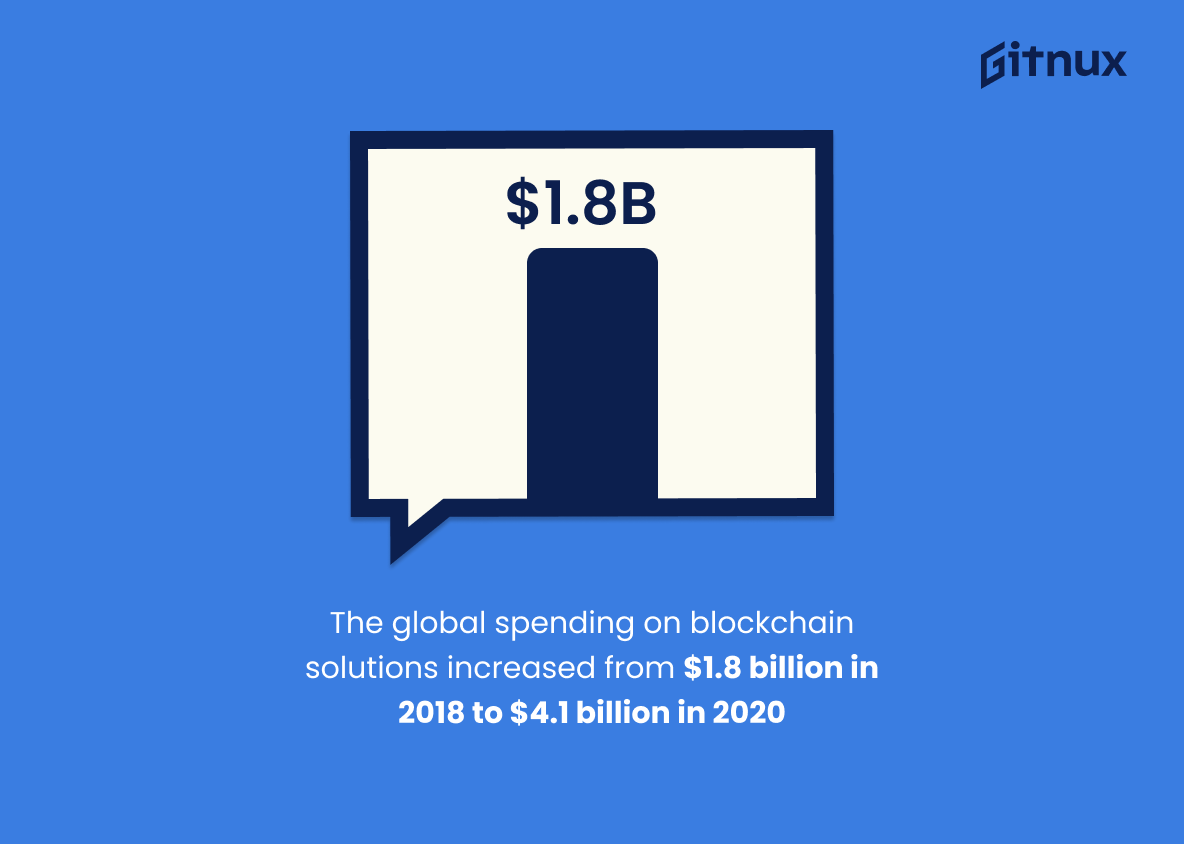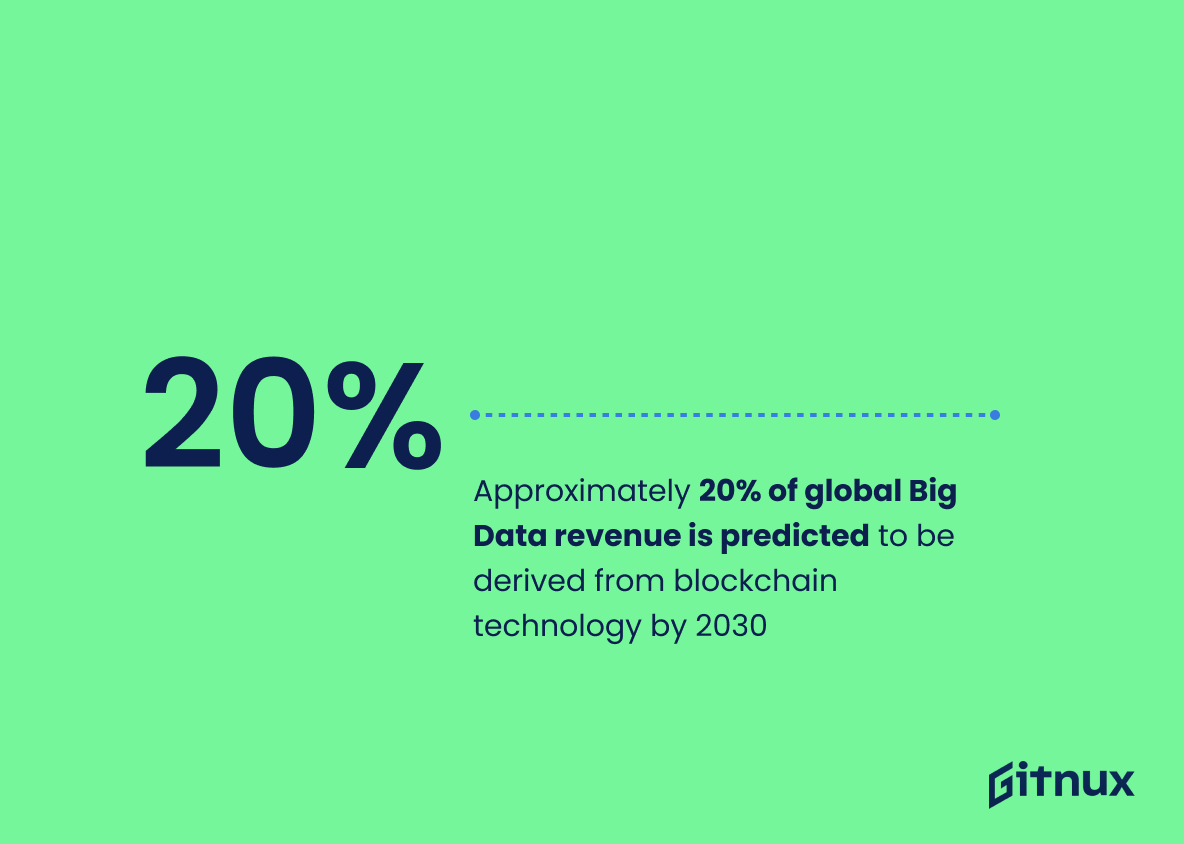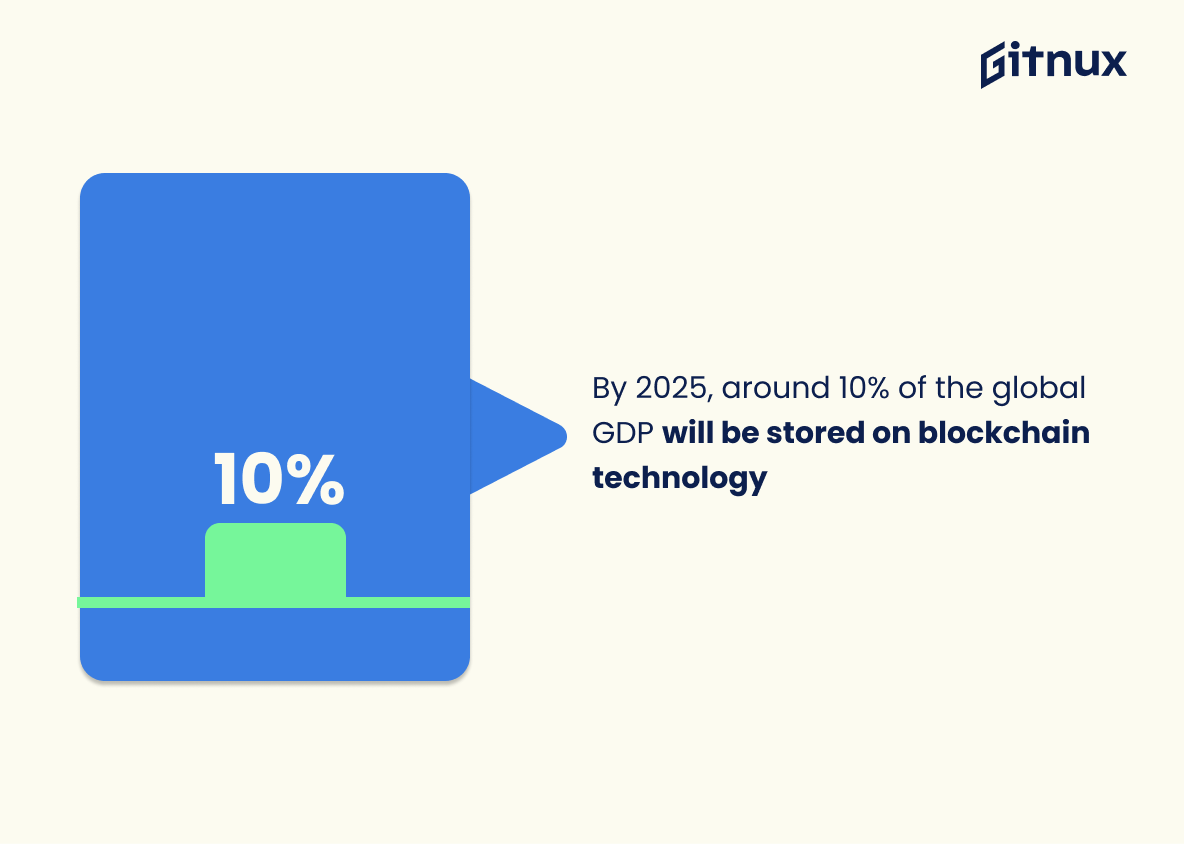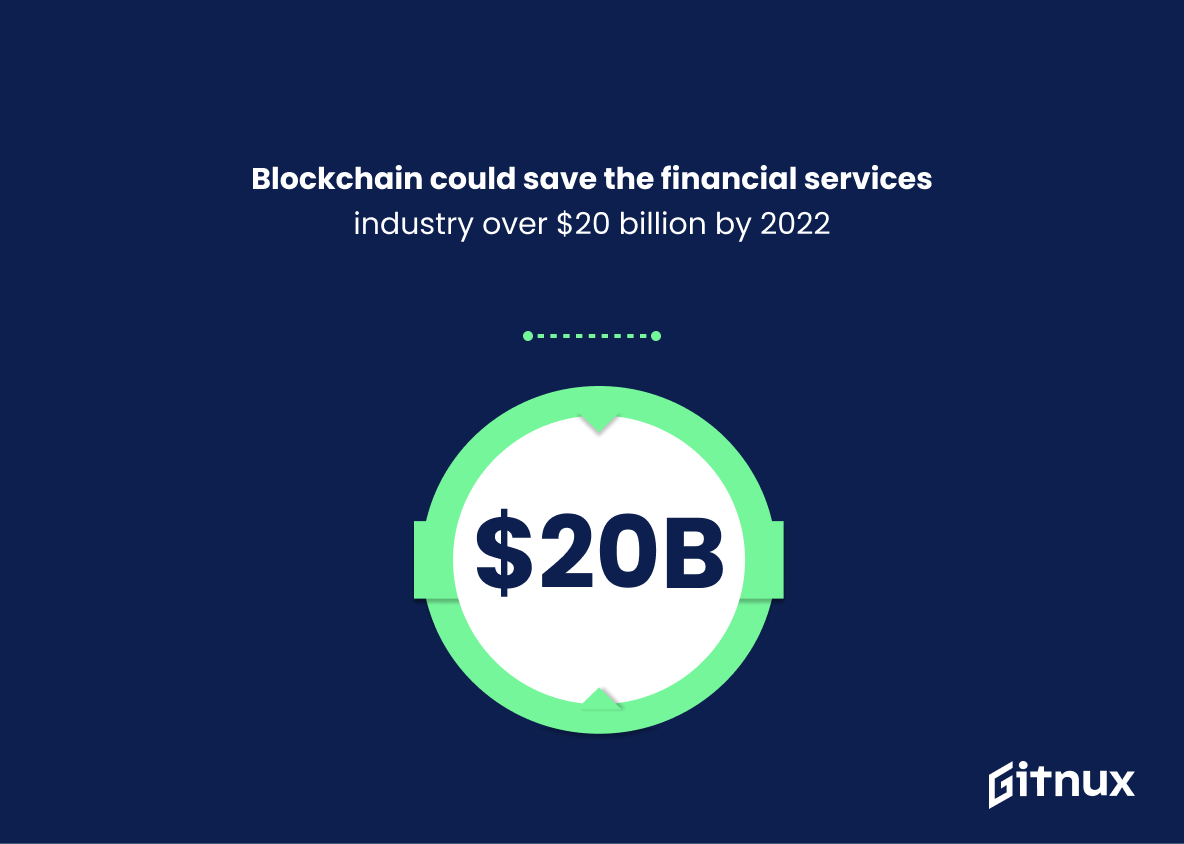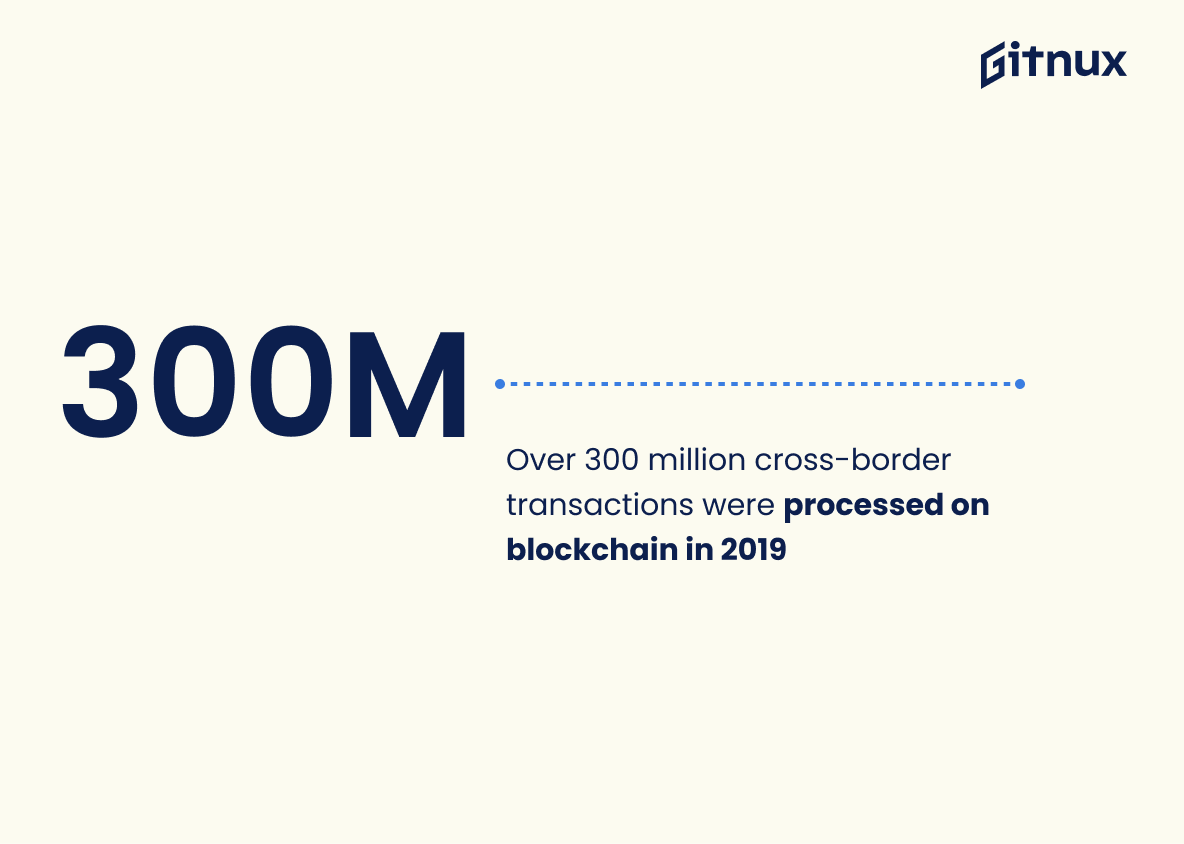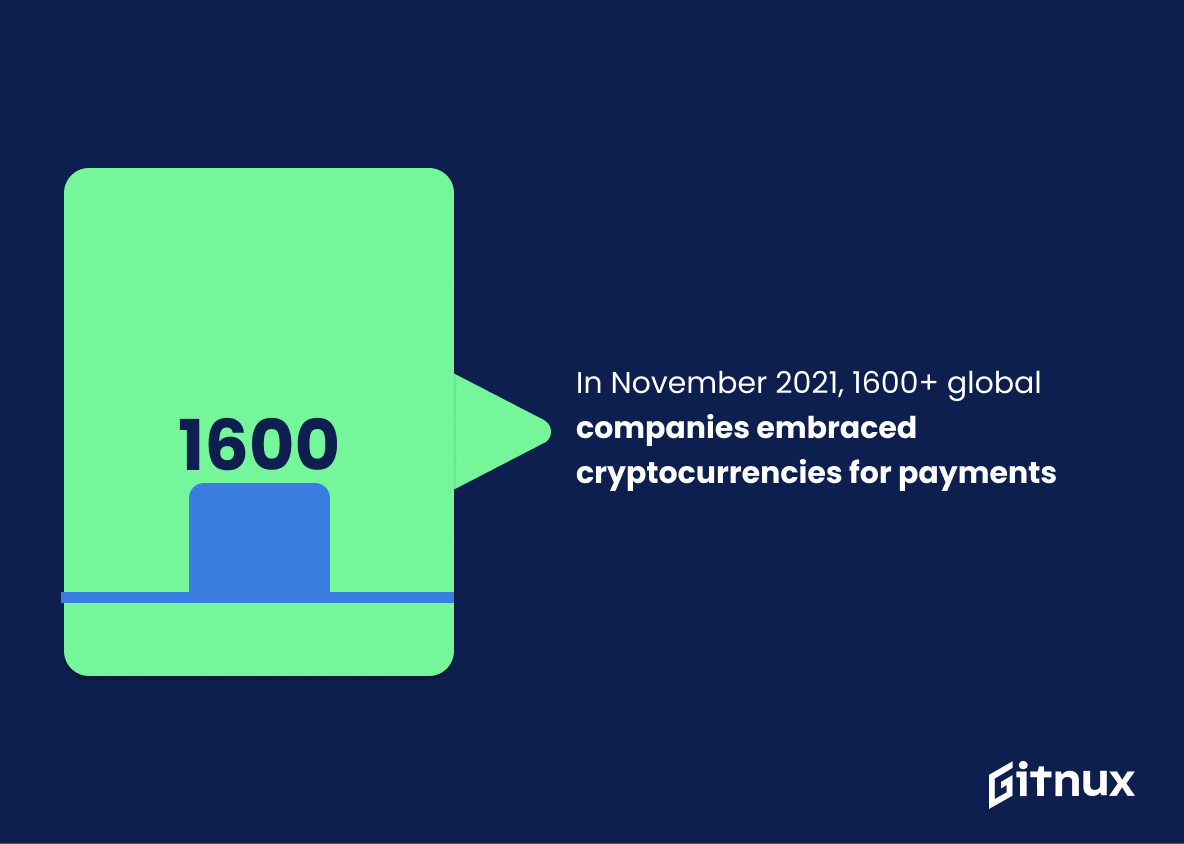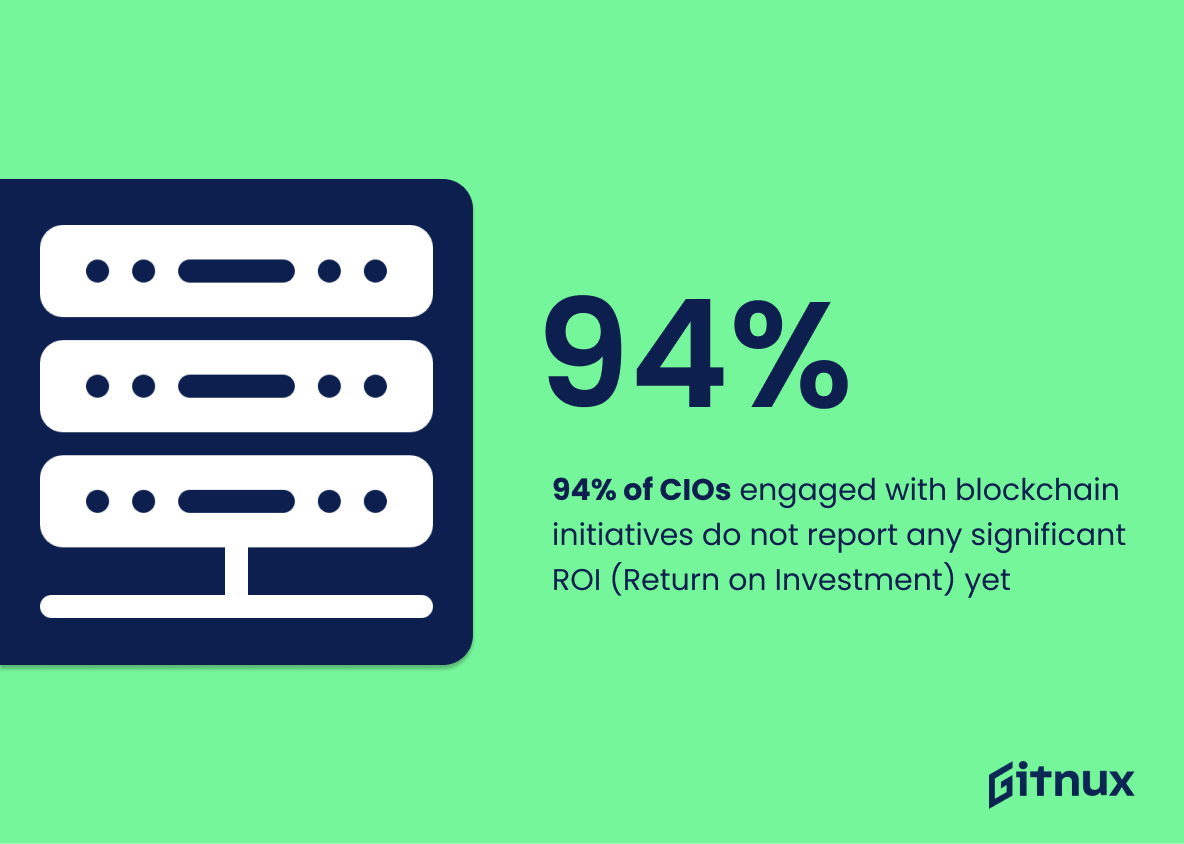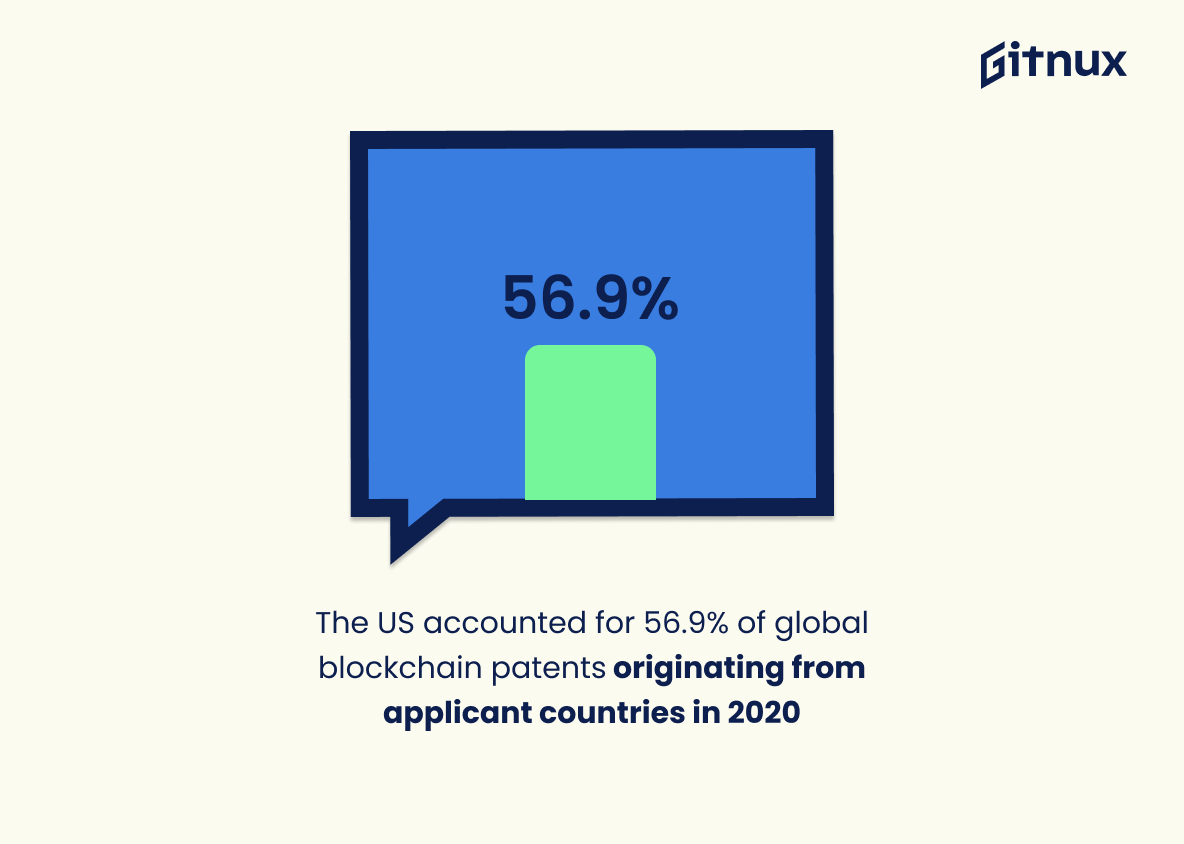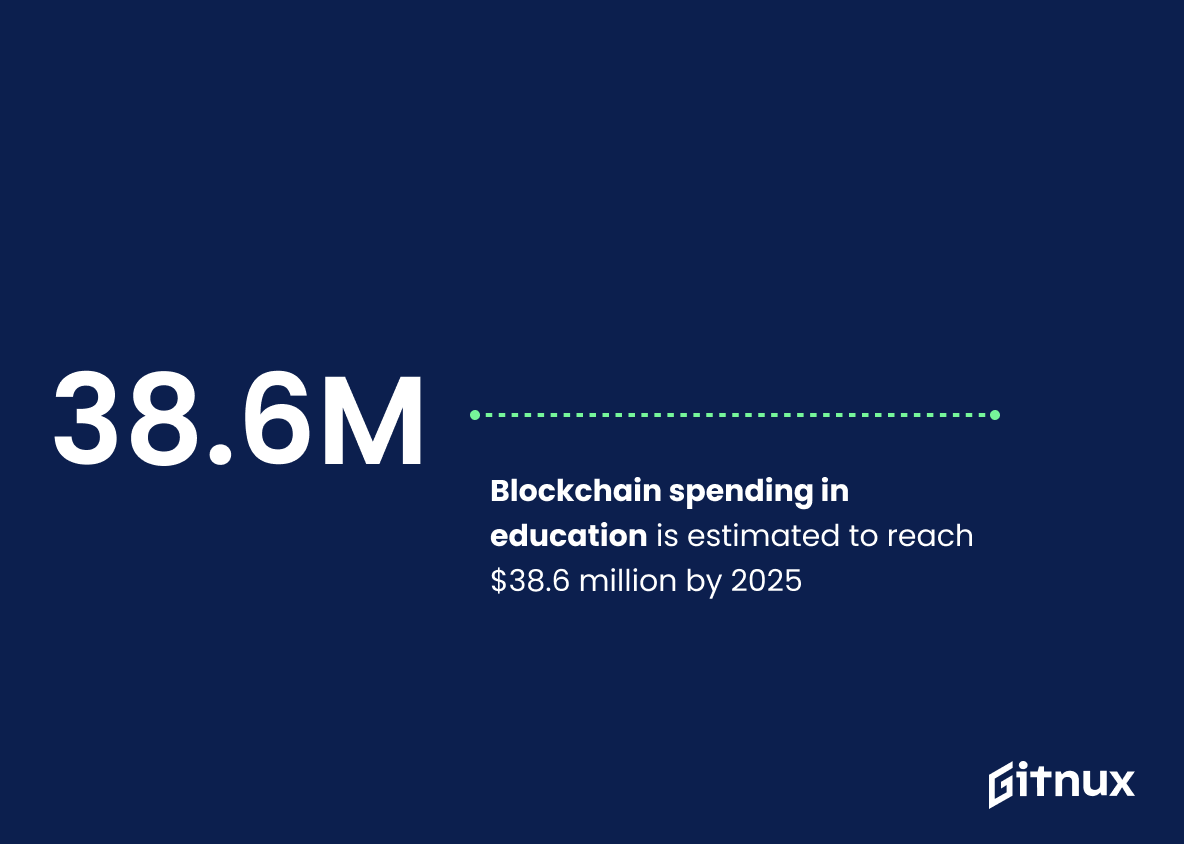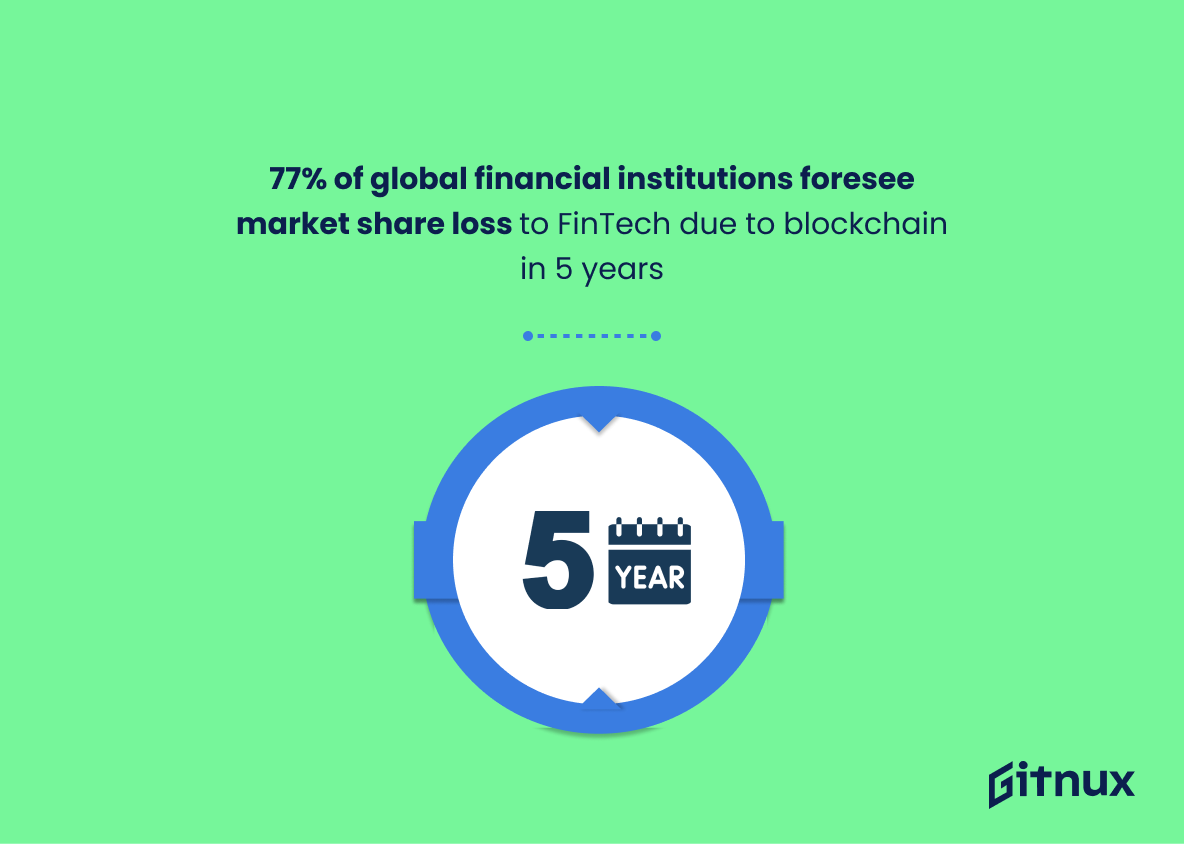As the world continues to embrace digital transformation, blockchain technology is becoming increasingly popular. From financial services and healthcare to education and supply chain management, businesses across industries are leveraging this revolutionary technology for a variety of applications. This blog post will explore some of the most recent statistics on global blockchain usage in order to gain insight into its current state as well as future potential. We’ll look at data from various sources such as Gartner, IBM, Statista and more that provide an overview of how much money is being invested in blockchain solutions around the world; which countries have adopted it most quickly; what sectors are leading innovation with this technology; and other key trends related to its growth over time. By understanding these figures better we can get a clearer picture of where things stand today – so let’s dive right in.
This statistic is a testament to the immense potential of blockchain technology. It shows that the market size is expected to skyrocket in the next few years, indicating that more and more businesses are recognizing the value of blockchain technology and investing in it. This is a clear indication that blockchain technology is here to stay and will continue to revolutionize the way we do business.
In 2020, there were more than 50 million blockchain wallet users worldwide.
This statistic is a testament to the growing popularity of blockchain technology. It shows that more and more people are recognizing the potential of blockchain and are taking advantage of its many benefits. This statistic is a clear indication that blockchain is becoming an increasingly important part of our lives and is here to stay.
Blockchain Usage Statistics Overview
Approximately 90% of North American and European banks are exploring blockchain technology.
This statistic is a testament to the potential of blockchain technology, as it shows that the majority of North American and European banks are actively exploring its capabilities. This indicates that the banking industry is taking blockchain seriously, and that it could soon become a major part of the financial landscape. This is an important development for anyone interested in the future of blockchain technology, as it shows that the technology is being taken seriously by the banking industry.
The global spending on blockchain solutions increased from $1.8 billion in 2018 to $4.1 billion in 2020.
This statistic is a testament to the growing popularity of blockchain solutions. It shows that more and more businesses are recognizing the potential of blockchain technology and investing in it. This is a clear indication that blockchain is becoming an increasingly important part of the global economy and is here to stay.
Approximately 20% of global Big Data revenue is predicted to be derived from blockchain technology by 2030.
This statistic is a powerful indicator of the potential of blockchain technology to revolutionize the Big Data industry. By 2030, blockchain technology is expected to account for a significant portion of global Big Data revenue, demonstrating its potential to become a major player in the industry. This statistic is a clear sign that blockchain technology is here to stay and is likely to become an integral part of the Big Data landscape in the near future.
By 2025, around 10% of the global GDP will be stored on blockchain technology.
This statistic is a testament to the potential of blockchain technology to revolutionize the global economy. By 2025, blockchain technology is projected to be responsible for a significant portion of the global GDP, indicating that it is becoming increasingly important in the world of finance and commerce. This statistic is a clear indication that blockchain technology is here to stay and will continue to be a major player in the global economy.
Blockchain could save the financial services industry over $20 billion by 2022.
This statistic is a powerful indicator of the potential of blockchain technology to revolutionize the financial services industry. By 2022, blockchain could save the industry an estimated $20 billion, demonstrating the immense cost savings that can be achieved through its implementation. This statistic is a clear indication that blockchain is a technology worth investing in, and that its potential to revolutionize the financial services industry is immense.
The healthcare industry is expected to invest roughly $5.61 billion in blockchain technology by 2025.
This statistic is a testament to the potential of blockchain technology in the healthcare industry. It shows that the industry is willing to invest heavily in the technology, indicating that it is seen as a viable solution to many of the challenges faced by the sector. This is an encouraging sign for those interested in the potential of blockchain technology, and it is likely to lead to further investment and development in the years to come.
China’s blockchain spending is predicted to see a growth rate of over 65.7% during 2018-2023.
This statistic is a testament to the increasing popularity of blockchain technology in China. It shows that the country is investing heavily in the technology, which could lead to a surge in its usage in the near future. This could have a significant impact on the global blockchain landscape, as China is one of the world’s largest economies. As such, this statistic is an important indicator of the potential growth of blockchain usage in the coming years.
Over 300 million cross-border transactions were processed on blockchain in 2019.
This statistic is a testament to the power of blockchain technology, demonstrating its ability to facilitate cross-border transactions on a massive scale. It shows that blockchain is a viable option for businesses and organizations looking to streamline their international transactions, and that its usage is growing rapidly. This statistic is a clear indication that blockchain is becoming an increasingly important part of the global economy.
As of November 2021, there were over 1600 companies worldwide accepting cryptocurrencies as a mode of payment.
This statistic is a testament to the growing acceptance of cryptocurrencies as a legitimate form of payment. It shows that more and more companies are recognizing the potential of blockchain technology and are willing to embrace it as a payment option. This is a clear indication that blockchain technology is becoming increasingly popular and is being adopted by a wide range of businesses. This is an important statistic to consider when discussing the usage of blockchain technology and its potential for the future.
In 2021, 94% of 200 large organizations surveyed were considering or actively engaged in deploying blockchain in their businesses.
This statistic is a testament to the growing popularity of blockchain technology among large organizations. It shows that the majority of these organizations are either actively exploring or already implementing blockchain solutions, indicating that the technology is becoming increasingly accepted and adopted. This is an important indicator of the potential of blockchain technology and its potential to revolutionize the way businesses operate.
94% of CIOs engaged with blockchain initiatives do not report any significant ROI (Return on Investment) yet.
This statistic is a telling indication of the current state of blockchain initiatives, as it suggests that the majority of CIOs have yet to see any significant returns from their investments. This is an important statistic to consider when discussing the usage of blockchain technology, as it highlights the need for further research and development in order to maximize the potential of this technology.
The US accounted for 56.9% of global blockchain patents originating from applicant countries in 2020.
This statistic is a testament to the US’s commitment to blockchain technology and its potential applications. It shows that the US is leading the way in terms of blockchain innovation, and is likely to remain at the forefront of the industry for the foreseeable future. This is an important indicator of the potential for blockchain to revolutionize the way we do business, and the US’s commitment to this technology is a strong signal that it is here to stay.
Blockchain spending in education is estimated to reach $38.6 million by 2025.
This statistic is a telling indication of the growing importance of blockchain technology in the education sector. It shows that more and more educational institutions are recognizing the potential of blockchain and are investing in it to improve their operations. This is a clear sign that blockchain is becoming an increasingly integral part of the educational landscape, and its usage is only expected to grow in the coming years.
Roughly 53% of supply chain organizations surveyed could not quantify the potential return on investment (ROI) on their adoption of blockchain technology.
This statistic is a telling indication of the current state of blockchain technology adoption in the supply chain industry. It suggests that a majority of organizations are still in the early stages of exploring the potential of blockchain, and have yet to fully understand the potential benefits it can bring. This highlights the need for more education and guidance on the use of blockchain technology in the supply chain industry, so that organizations can make informed decisions about its adoption.
77% of financial institutions across the world believe that they will lose market share to standalone FinTech companies within the next five years, partially due to blockchain adoption.
This statistic is a powerful indicator of the potential of blockchain technology to disrupt the traditional financial services industry. It shows that the majority of financial institutions recognize the threat posed by FinTech companies and the potential of blockchain to revolutionize the way financial services are provided. This statistic is a clear sign that blockchain is here to stay and that it is likely to have a major impact on the financial services industry in the near future.
48% of surveyed businesses with more than 50 employees plan to roll out blockchain-based solutions within the next three years.
This statistic is a telling indication of the growing prevalence of blockchain-based solutions in the business world. It shows that a significant portion of businesses with more than 50 employees are already planning to implement blockchain-based solutions in the near future, demonstrating the technology’s potential to revolutionize the way businesses operate. This statistic is an important piece of evidence for anyone looking to understand the current state of blockchain usage and its potential for the future.
In 2022, it is estimated that identity verification using blockchain will reach a market value of $1 billion.
This statistic is a testament to the potential of blockchain technology in the identity verification space. It shows that the market is recognizing the value of blockchain-based solutions and is willing to invest in them. This is an important indicator of the growing acceptance of blockchain technology and its potential to revolutionize the way we verify identities.
Around 45% of IoT (Internet of Things) companies are considering or actively engaged in using blockchain technology for their operations.
This statistic is a clear indication that blockchain technology is becoming increasingly popular among IoT companies. It shows that a significant portion of the industry is recognizing the potential of blockchain and is actively exploring ways to incorporate it into their operations. This is an important development that could have a major impact on the future of the IoT industry.
Conclusion
The statistics presented in this blog post demonstrate the rapid growth of blockchain technology and its increasing adoption across various industries. By 2025, it is expected that the global blockchain technology market size will reach $39.7 billion with a CAGR of 67.3%. Additionally, there are currently more than 50 million blockchain wallet users worldwide and 90% of North American and European banks are exploring or actively engaged in using this technology for their operations. Furthermore, spending on blockchain solutions has increased from $1.8 billion to $4.1 billion between 2018-2020 while Big Data revenue derived from it is predicted to be 20% by 2030 globally as well as 10% of GDP stored on it by 2025 respectively.
Moreover, healthcare industry investments into this tech could reach up to 5$61billion by 2025 while China’s spending rate may grow over 65%, according to some estimates; also 300 million cross-border transactions were processed via blockchains last year alone which was followed by 1600 companies accepting cryptocurrencies as payment mode in 2021 so far – 94 percent out 200 large organizations surveyed being considering or actively engaging themselves into deploying such technologies within their businesses too. However despite all these advancements only 53 % supply chain organisations have been able quantify potential ROI (Return On Investment) yet whereas 77 % financial institutions believe they might lose market share due FinTechs partially because of adopting Blockchain & 48 % business having more than 50 employees plan roll out related solutions within next three years but unfortunately 94 percent CIOs still don’t report any significant returns yet even though identity verification through same tech can become 1 Billion dollar worth market value 2022 onwards & 45 IoT firms already consider/engage themselves towards similar goals . All these facts clearly indicate how rapidly Blockchain Technology is growing & becoming an integral part off many different sectors around world today .
References
0. – https://www.researchandmarkets.com
1. – https://www.santander.com
2. – https://www.prnewswire.com
3. – https://www.globenewswire.com
4. – https://www.statista.com
5. – https://www.pwccn.com
6. – https://www.ibm.com
7. – https://www.bitcoinwiki.org
8. – https://www.weforum.org
9. – https://www.unctad.org
10. – https://www.gartner.com
11. – https://www.gbm.hsbc.com
12. – https://www.forbes.com
13. – https://www.coinmetrics.substack.com
ZipDo, cited June 2023: Blockchain Usage Statistics

